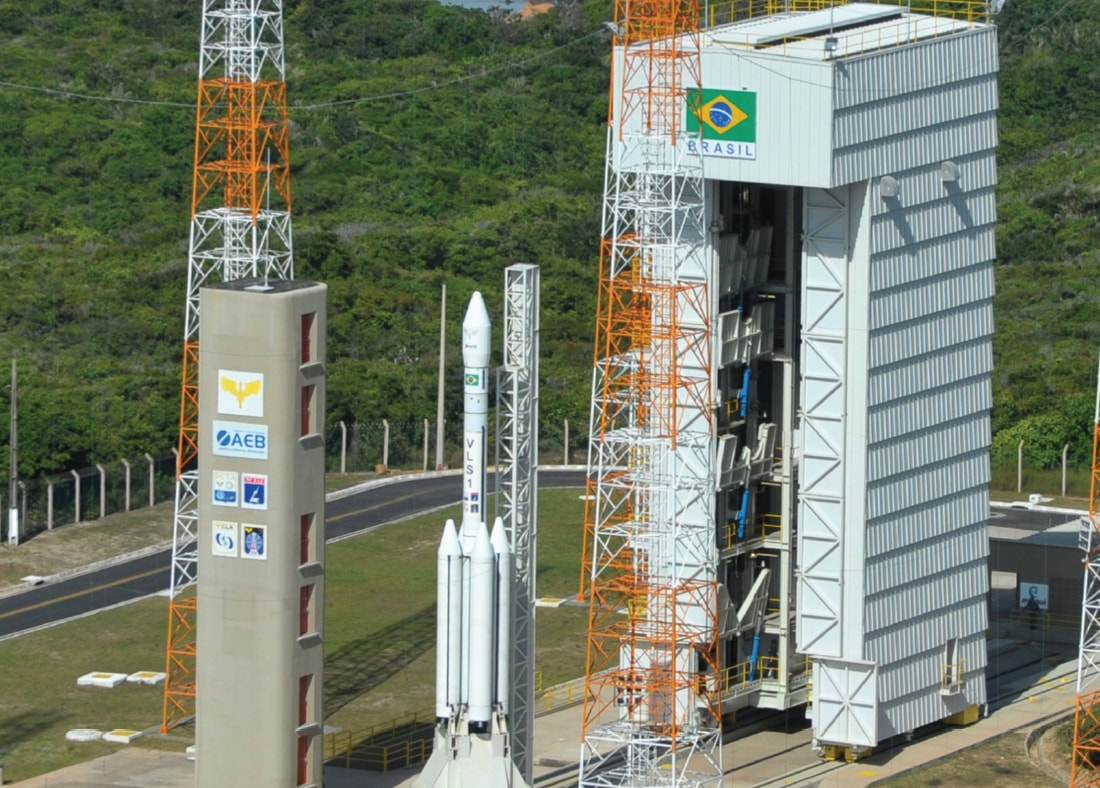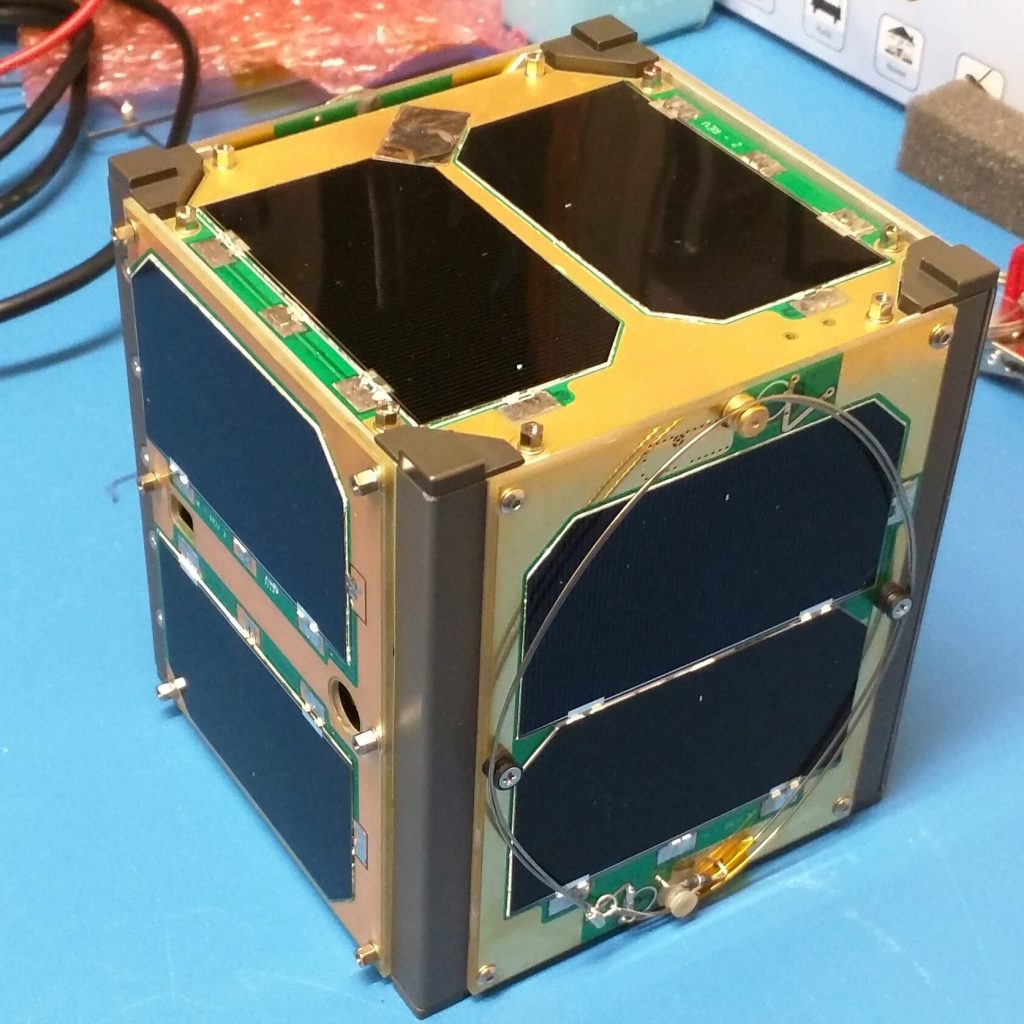 An international agreement between U.S. and Brazil for commercial use of a rocket launch site in Alcantara is advancing and will take center stage during Vice President Mike Pence's visit to Brasilia this week. Brazil's defense minister recently said that Boeing, Lockheed Martin and other U.S. aerospace companies have expressed interest in launching rockets from its Alcantara military base. Alcantara's location makes it attractive because one-fifth less fuel is used to launch satellites into orbit along the equator compared with sites farther north or south. Both sides have made concessions and things are moving ahead in a very positive way, says Jefferson Michaelis head of the BFCC/KSCIA International Space-STEM Partnerships. Alcantara's proximity to the equator which is only 2 degrees south of the equator makes it cheaper to launch rockets. The base could generate revenue of up to $1.5 billion per year, according to the Brazilian defense ministry. Launches from Brazil take advantage of the increased rotational velocity of the earth for an "extra push" into equatorial orbits, translating to about a 30 percent increase in the amount of payload a rocket can lift as compared to Cape Canaveral. This would be a major efficiency gain for U.S. launch companies. Brazil's geographic and economic characteristics are such that there is a great potential to employ space technology to meet national needs, therefore a huge market for U.S. companies to compete for potential large contracts in the domestic space market. The Brazilian Air Force plans to spend approximately $2.4 billion over the next 10 years on its strategic space systems program, including on four or five fleets of satellites, investment in the Alcântara infrastructure, laboratories and research. Brazil's satellite program plans to spend $380 million over the same period. The Brazilian commercial market is also very attractive. There is huge demand for satellite services (broadband connectivity, rural communications, etc.) that satellite service providers could help to address, including a Brazilian national broadband plan designed to providing broadband to millions of Brazilians who currently don't have Internet access. Brazil is already one of the largest smartphone market by volume in the world. According to 321Go.Space sources, a cooperation on a space partnership between the U.S. and Brazil will be an important part of the upcoming trip and a topic of a working lunch Vice President Mike Pence will have with President Michel Temer. Pence heads the National Space Council and is seeking to expand the council's work with international space partnerships. Visit: http://www.BrazilFlorida.org for more details
1 Comment
 Photo of RadFxSat CubeSat. Credits: The Radio Amateur Satellite Corporation (AMSAT) and Vanderbilt University Photo of RadFxSat CubeSat. Credits: The Radio Amateur Satellite Corporation (AMSAT) and Vanderbilt University The educational CubeSat missions were selected through the CubeSat Launch Initiative as part of the 14th installment of NASA’s Educational Launch of Nanosatellites (ELaNa) missions. The ELaNa XIV mission was an auxiliary payload on the Nov. 18, 2017, launch of the Joint Polar Satellite System-1 satellite (now NOAA-20), a collaborative effort between the National Oceanic and Atmospheric Administration (NOAA) and NASA. One CubeSat launched from the JPSS-1 rocket, RadFxSat, is a partnership between students at Vanderbilt University, Nashville, Tennessee, and AMSAT, a worldwide group of amateur radio operators. The Vanderbilt team built the science payload while AMSAT did the integration onto their own CubeSat platform. Their experiment is designed to obtain early on-orbit data in support of modeling radiation effects in a commercial memory, currently used for consumer electronics. So far the project is successfully sending back data. “Because we partnered with the company donating the memory, there were engineering challenges to make sure we could communicate with the memory properly. I learned about power allocation and making sure the memories were within their power budget. I didn’t realize how important power was for a spacecraft until I had to do it myself,” said Rebekah Austin, a graduating Ph.D. student in electrical engineering at Vanderbilt. Austin is also a returning engineering summer intern at NASA’s Goddard Space Flight Center in Greenbelt, Maryland. A small group of students recently got to experience a rare, spaceflight thrill: seeing if the tiny satellite, called a CubeSat, they designed and built not only survived a rocket launch to space but also successfully gathered and transmitted data once on orbit. Meanwhile, another CubeSat project, called EagleSat-1, is working through post-launch challenges. “It turns out we are not getting data back. There is still learning occurring, which is our main reason for doing the program. The students are learning the process of failure analysis and understanding the spacecraft a little bit better as a result of trying to figure out what could have gone wrong and try to figure out if there is anything we can do while it is on orbit,” said Dr. Gary Yale, associate professor of aerospace engineering and faculty mentor for EagleSat-1, at Embry-Riddle Aeronautical University in Prescott, Arizona. One possibility under consideration by the team of undergraduate researchers is that their antenna did not deploy after launch. The EagleSat-1 team hopes that if that is the problem, eventually the fishing line holding the antenna down will decay due to ultraviolet radiation in the space environment, causing the line to break and deploy the antenna, which was the backup plan for that eventuality. For additional information about NASA’s CubeSat Launch Initiative program, visit: http://go.nasa.gov/CubeSat_initiative. https://www.nasa.gov/feature/elana-xiv-cubesat-launch-on-jpss-1-mission For additional information on JPSS: http://www.jpss.noaa.gov/ For additional information on RadFxSat: http://www.isde.vanderbilt.edu/wp/radfxsat1/ For additional information on EagleSat: http://prescott.erau.edu/about/labs/axfab-eaglesat/ |
321 go SPACE321 GO. SPACE reports and informs on global events, trends and news taking place within the Science, Technology, Engineering, and Aerospace industry. Archives
July 2024
Categories |
 RSS Feed
RSS Feed
